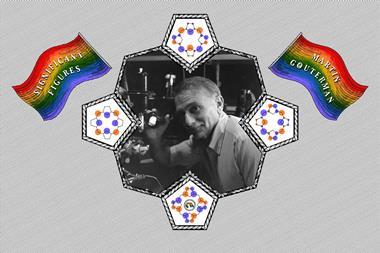Time to get comfortable talking about race and diversity

The horrific murder of George Floyd in America has resurfaced many thoughts around race equality and justice. It has been a highly emotional period for many who consider themselves as minoritised. Just when many were coming to terms with these tragic events and feeling the empowerment from the Black Lives Matter movement, an article by Tomáš Hudlický in Angewandte Chemie made many statements that indicated that diversity could have a negative impact within our chemistry community. Although the article generated opprobrium and has since been withdrawn,1 many chemists of colour are left questioning if they belong and whether they will ever see equity and justice in chemistry.
Understanding the lived experience
The challenges faced by chemists of colour involve specific issues that have seldom been addressed, despite them not arising recently. So, what is it like being a person of colour in the chemistry community? The first and obvious way to express it is to understand how it feels to be constantly abused due to the colour of your skin or cultural beliefs. Many chemists of colour have encountered various acts of racism (such as being stereotyped or called names for their skin colour) throughout their career, and will encounter them again in the future. Some will laugh off this racism to prevent an awkward situation while internalising it, leading to mental distress. Chemists of colour who do call out this abhorrent behaviour often are not heard, or are seen as troublemakers, and support from others is often lacking. Thus a chemist of colour will mentally carry these distressing experiences throughout their career.
Systemic challenges also exist for chemists of colour to progress within the community. Even at undergraduate level these challenges are apparent, with students of colour receiving fewer first or upper second class degrees than white students.2 This differential continues, with chemists of colour being less likely to progress into postgraduate education, obtain academic employment, obtain promotion, be recognised for their achievements and be given leadership roles.
Given how hard it is to make it into academia, some people will say all successful chemists have to swim against the tide. However, chemists of colour have been tackling a tsunami. This is highlighted by recent data released by UK Research and Innovation funding councils, which shows that ethnic minority principal investigators have grant success rates of 17% over a period of five years, whereas white researchers have a success rate of 27%.
How do we create an inclusive culture?
Bringing change can seem challenging, given that the problems we face have been created by a culture that pervades both chemistry and wider society. However, with the current momentum behind the Black Lives Matter movement, now could be the moment we make landmark changes in creating an inclusive culture. So where do we start? The obvious place is to stop clustering chemists of colour together to describe them as ‘a Black, Asian and Ethnic Minority (BAME) chemist’. This takes away individual identities and encourages seeing everyone as a homogenous group.
It’s time our chemistry community takes the knee
But this does not mean withdrawing support. Understanding the lived experience of chemists of colour, or in fact anyone who is different to you, will provide greater understanding and generate a stronger spirit of allyship, which is important to help project the voices of those who have been underrepresented for many years. Call out any racism, tokenistic behaviour and microaggressions that you see. It’s time our chemistry community takes the knee.
To change the long-lasting disadvantages that have held back chemists of colour, systemic structural changes need to occur. This can only happen if powerful voices within our community demonstrate their desire to make real change. This requires us to take internal audits to evaluate our existing practices within institutions or societies, and to then be bold enough to highlight where bias exists. Using the findings of such an audit to create frameworks that specifically combat the biases found will lead to fairer recruitment, provide clear policy on how to increase representation of minority groups and create platforms for championing chemists of colour so their voices are heard and present in leadership areas.
Across the UK, 15 universities have already conducted audits and created action plans as a key requirement in securing a bronze award for the Race Equality Charter. However, only 66 universities are members of the charter. Compare this to the action taken on gender equality, where the 164 members of the Athena Swan Charter hold 815 institutional and department awards between them.
Our chemistry community is beautiful due to its diversity, which brings together people across the world who share the same passion for chemistry. It is time we support and encourage all of its members, and fight to sustain our diverse and inclusive community.
References
1 A G Beck-Sickinger et al, From Scientists to Scientists—Moving Angewandte into the Future. Angewandte Chemie International Edition
2 Universities UK, and National Union of Students, Black, Asian and minority ethnic student attainment at UK universities: #ClosingtheGap. 2019












No comments yet